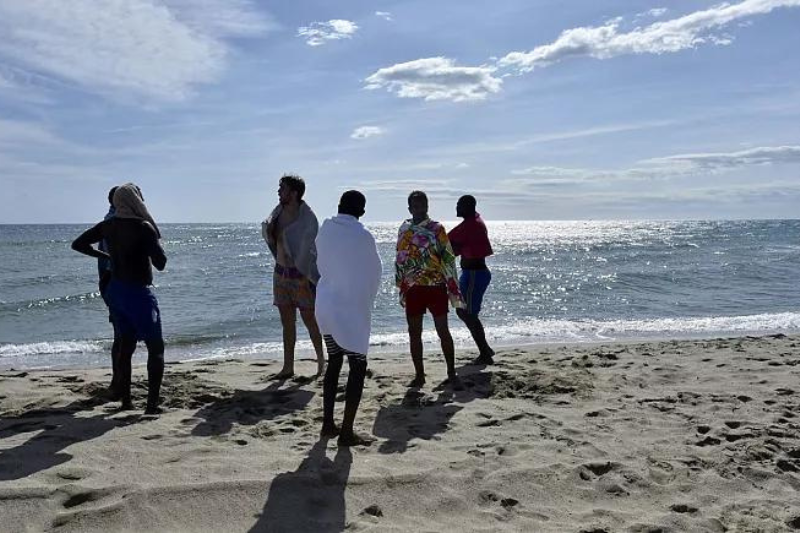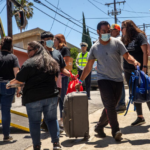
migrants in france learn to swim and overcome their crossing
Mohamed, a Mauritania immigrant, swims for the first time while being assisted by a lifeguard who helps him get over a fear he developed after risking his life to cross the Mediterranean.
Migrants are taking their first swims just a few meters from the beach umbrellas of vacationers in the French seaside town of Canet-en-Roussillon.
Mohamed spent four days at sea between Morocco and France in a makeshift boat carrying 60 people as he attempted to reach the coast.
The 31-year-old recalls, We were crammed in with just a rucksack at our feet. I was unable to go home by going back.
He went back to the waters that might have washed him away a few months later.
In just a few sessions, you can see the evolution. They’ve transformed from being afraid of the water to having a blast there, says Corinne Grillet, the organization’s founder and the head of Welcome66, a Perpignan-based organization that teaches swimming to refugees.
Mohamed tries a few fathoms underwater and allows the current to carry him. The sound of the waves is accompanied by a 23-year-old Somali man named Abdirahman laughter next to him.
He traveled to France from Somalia by way of a boat that was dangerously overloaded. One of his friends was swept away by the sea while attempting to cross a month ago. He says, “The sea is terrifying”.
Keep Reading
The development of the young Somalian excites Delphine Bassols. She explains that teaching young migrants “means giving them a piece of freedom” for this former synchronized swimmer.
Ali is afraid of the size of the waves and does not want to enter the water. Unlike Souleyman, 28, who left Mauritania to travel to France a year and two months ago, he is unwilling to discuss his journey.
He asserts, “I’m not afraid to learn to swim.” To get to Europe, I had to cross the sea. The young man confides that he and 46 other people were traveling on a small boat as they faced the Mediterranean Sea.
Souleyman finds it challenging to conceal his worry about the waves once in the water. He follows his teacher’s advice with focused eyes. It’s a little tricky with the waves, but it’s okay, he says.
I was able to hold Souleyman’s head while surfing and sense his tension. Bassols notices that the man conceals his fear by laughing.
According to Jacky Roptin, a psychologist at the Centre Primo-Lévi who specializes in accompanying migrants, thousands of men and women perish at sea each year while making their crossing, leaving the survivors with psychological damage.
Often, this trauma is concealed. We frequently picture trauma that is unique to what they went through in their nation. We occasionally tend to believe that the violence they encounter at sea will be less severe.
Corinne Grillet decided to set up swimming lessons because the young immigrants in her association were plagued by anxiety and fear. Grillet decided to acclimatize the young people she guides to the aquatic environment two years ago after observing their reaction to the sight of the sea.
She said I thought it was a shame to live in a place like this and have this fear, even phobia, of water.









